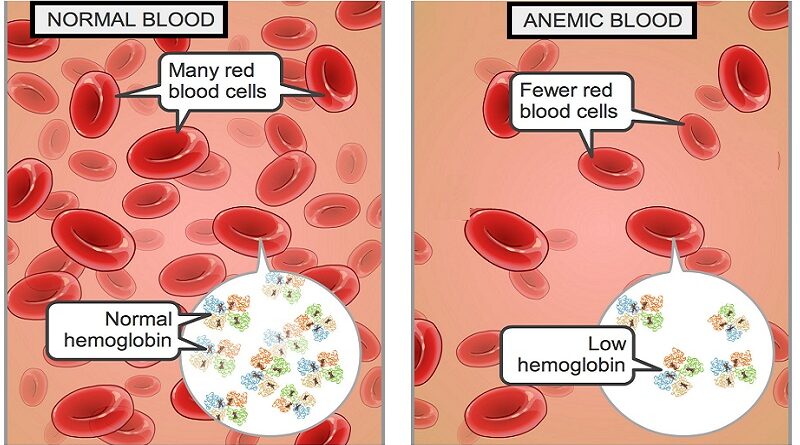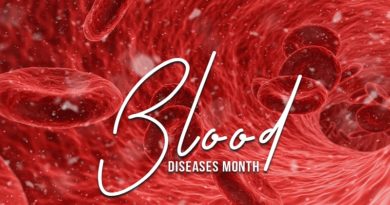Iron Deficiency Anemia: the Common Cause of Fatigue
Iron deficiency anemia is a health condition characterized by low levels of hemoglobin, which is a protein found in red blood cells responsible for carrying oxygen throughout the body. Without enough iron, the body cannot produce sufficient hemoglobin, leading to a reduced capacity to transport oxygen. This can result in a range of symptoms, including fatigue, weakness, shortness of breath, pale skin, headache, dizziness, and increased heart rate.
In this article, we shall explore Iron Deficiency Anemia, its symptoms, causes and risk factors, diagnosis, and management.
Symptoms
The symptoms of iron deficiency anemia can be subtle and easily attributed to other causes, leading to delayed diagnosis. Individuals often dismiss their fatigue as a result of a busy lifestyle or stress. However, recognizing the specific symptoms can help prompt further investigation and early intervention.
- Fatigue and weekness:
Persistent and unexplained fatigue is one of the hallmark symptoms of iron deficiency anemia. Individuals may feel constantly tired, lacking the energy to perform daily tasks. Simple activities that were once effortless can become challenging. - Shortness of Breath:
Reduced oxygen-carrying capacity leads to breathlessness, even during mild exertion. Climbing stairs or engaging in physical activities may leave individuals gasping for air. - Pale Skin and Nail Beds:
The decreased levels of red blood cells can result in pale skin and nail beds. The natural rosy complexion may appear washed out. - Headache and Dizziness:
Inadequate oxygen supply to the brain can cause headaches and dizziness. Individuals may feel lightheaded or experience fainting spells.
Causes and Risk Factors
this condtion can be caused by various factors, including inadequate dietary intake of iron, impaired iron absorption, blood loss, and increased iron requirements. Some individuals may be more susceptible to developing iron deficiency anemia due to certain risk factors:
- Inadequate Iron Intake:
A diet low in iron-rich foods, such as lean meats, poultry, fish, leafy green vegetables, and legumes, can contribute to iron deficiency anemia. - Blood Loss:
Chronic or acute blood loss can deplete the body’s iron stores. Menstruation, gastrointestinal bleeding, and conditions such as peptic ulcers or colorectal cancer are common causes of blood loss. - Pregnancy and Breastfeeding:
During pregnancy and breastfeeding, a woman’s iron requirements increase to support the growth and development of the fetus and the production of breast milk. - Gastrointestinal Disorders:
Conditions that affect the absorption of nutrients in the gastrointestinal tract, such as celiac disease or inflammatory bowel disease, can impair iron absorption and lead to anemia.
Diagnosis
Diagnosis typically involves a combination of medical history assessment, physical examination, and laboratory tests. Common diagnostic tests include:
- Complete Blood Count (CBC):
This test measures the levels of red blood cells, hemoglobin, and other components in the blood. Low levels of hemoglobin and red blood cells can indicate anemia. - Serum Ferritin:
Ferritin is a protein that stores iron in the body. A serum ferritin test measures the level of ferritin in the blood. Low ferritin levels indicate depleted iron stores, which can be indicative of iron deficiency anemia. - Iron Studies: Iron studies involve measuring various markers related to iron metabolism, including serum iron, total iron-binding capacity (TIBC), and transferrin saturation. These tests help determine the availability of iron in the body and the body’s ability to transport and utilize it.
- Additional Tests: In some cases, additional tests may be required to identify the underlying cause of iron deficiency anemia. These may include fecal occult blood tests, endoscopy, colonoscopy, or imaging studies to evaluate for gastrointestinal bleeding or other abnormalities.
Management
The management of iron deficiency anemia focuses on replenishing iron stores and addressing the underlying cause. Treatment options may vary depending on the severity of anemia and individual factors. The following strategies are commonly employed:
- Iron Supplements: Iron supplements are usually prescribed to restore iron levels in the body. They are available in various forms, including ferrous sulfate, ferrous gluconate, and ferrous fumarate. It is essential to follow the prescribed dosage and duration as recommended by the healthcare professional.
- Dietary Modifications: A diet rich in iron can aid in replenishing iron stores. Encouraging the consumption of iron-rich foods such as lean meats, poultry, fish, dark leafy greens, legumes, and fortified cereals can contribute to improved iron levels.
- Vitamin C Supplementation: Vitamin C enhances iron absorption. Combining iron-rich foods or supplements with a source of vitamin C, such as citrus fruits or supplements, can enhance iron absorption.
- Treating Underlying Conditions: If iron deficiency anemia is secondary to an underlying condition, such as gastrointestinal bleeding or a chronic disease, treating the underlying cause is essential for long-term management.
- Blood Transfusions: In severe cases of iron deficiency anemia where rapid correction is necessary, blood transfusions may be required to restore red blood cell levels and improve symptoms.
Prevention and Lifestyle Considerations
Prevention plays a crucial role in managing iron deficiency anemia. The following measures can help maintain adequate iron levels and reduce the risk of anemia:
- Balanced Diet: Consuming a well-balanced diet rich in iron, including a variety of iron-rich foods, can help prevent iron deficiency anemia. Incorporating foods from both animal and plant sources can provide a diverse range of nutrients.
- Iron-Fortified Foods: Incorporating iron-fortified foods, such as cereals or bread, can be beneficial, especially for individuals with increased iron requirements, such as pregnant women or vegetarians.
- Vitamin C-Rich Foods: Including vitamin C-rich foods, such as citrus fruits, strawberries, or bell peppers, in meals can enhance iron absorption from plant-based sources.
- Regular Check-ups: Routine medical check-ups can help detect iron deficiency anemia early, allowing for timely intervention and management.
- Avoid Excessive Tea and Coffee: Tea and coffee contain compounds that can inhibit iron absorption. Limiting consumption, especially during meals or close to iron-rich supplementation, can help maximize iron absorption.
SUMMARY
Iron deficiency anemia is a prevalent condition that can significantly impact an individual’s well-being and quality of life. Recognizing the symptoms, understanding the underlying causes, and seeking appropriate medical care are crucial steps toward effective management. With early diagnosis and a comprehensive treatment approach involving iron supplementation, dietary modifications, and addressing underlying conditions, individuals can regain their energy and vitality. By prioritizing prevention and adopting a healthy lifestyle, we can minimize the prevalence and impact of iron deficiency anemia, ensuring a vibrant and energetic life for all.
If you have questions you can drop them below in the comment section. You can contact us here: Google page – Helalmedical, or Facebook page. We offer quick and convenient testing options.




